Interrogation of the system
Let’s interrogate the RV2 with some popular Linux tools.

The system is running a LTS kernel which is good. Due to their high stability, LTS kernels are more dependable.
Processor
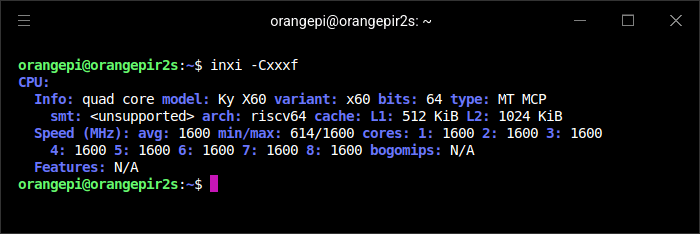
inxi incorrectly reports the CPU on my board is a Ky X60 8-core RISC-V AI CP. But the CPU is the Ky K1, the same processor found on the Orange Pi RV2. I note that the phoronix test suite reports the motherboard as Ky X1.
While inxi reports 614/1600 as min/max speeds, the CPU runs at a constant 1600MHz. It provides 40K+DMIPS CPU arithmetic and 2TOPS AI arithmetic.
With a room temperature of 26.1C, it idles around 61C. I recommend some cooling.
Graphics
Unlike the RV2, the R2S doesn’t have onboard video.
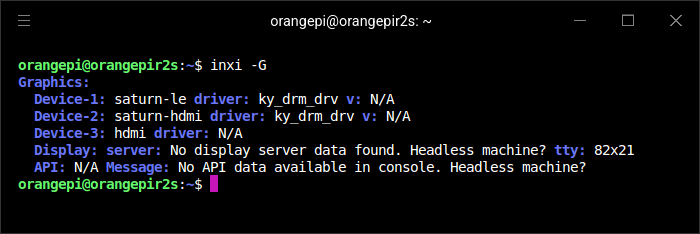
Disk
As previously covered, the board hosts 8GB eMMC. While there’s no microSD slot, or any M-key slots, I’m booting the machine from the USB 3.0 port to give much more storage capacity.
I tested the speed of my Lexar 128GB microSD card plugged into a USB 3.0 reader, and the 8GB eMMC module with hdparm. Here are the results.
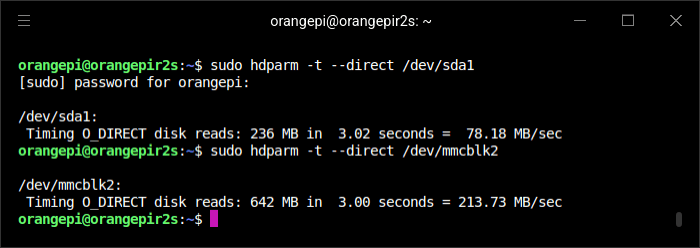
I also tested the speed I’m getting from a super-fast 2TB USB SSD.

Well it’s faster than the eMMC, but its speed is limited by the SanDisk reader.
Memory

This board has 8GB of DDR4 RAM. There are also 2GB and 4GB versions available.
Network
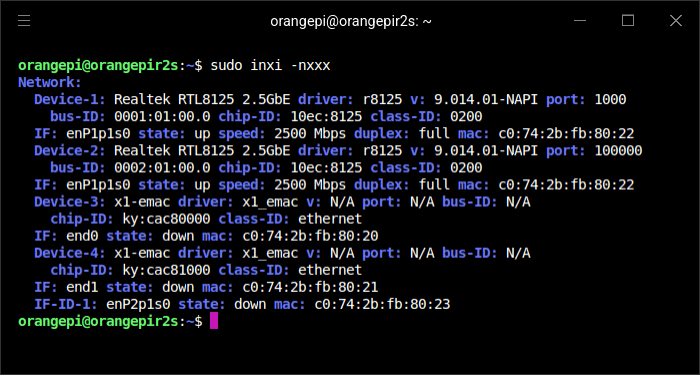
This is one of the strengths of the R2S with its 2.5G high-speed dual LAN ports and dual Gigabit LAN ports.
Other comments
The board also has a USB 2.0 port, a power indicator, a port light for each ethernet port, TF card transfer interface, and a 3PIN debug serial port. It doesn’t have Bluetooth or WiFi.
The R2S seems a great way to start your RISC-V adventures without making any dent on your wallet.
Reference Pictures
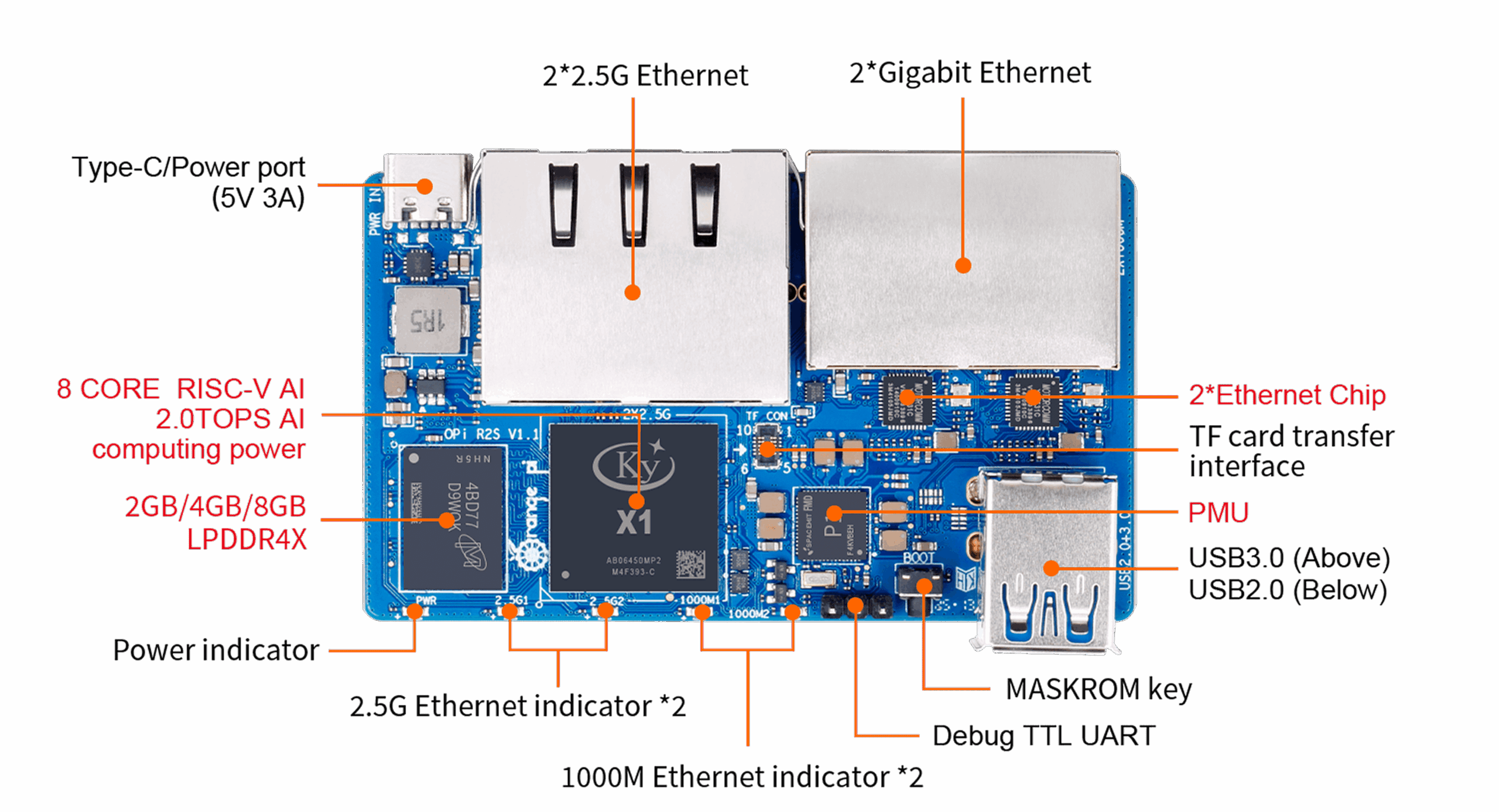

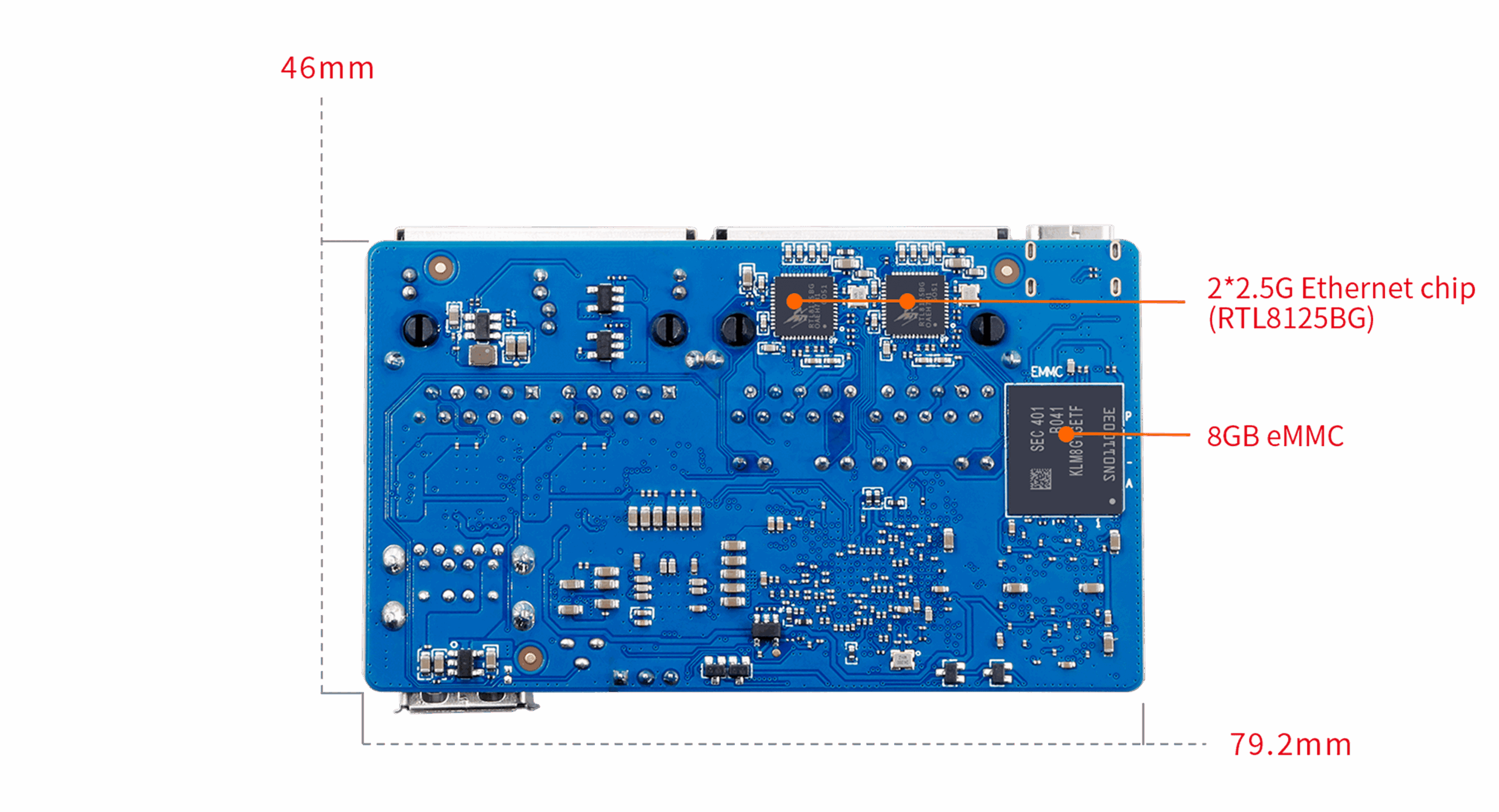
In the next article in this series, I’ll put the board through some benchmarks.
Pages in this article:
Page 1 – Introduction and Getting Started
Page 2 – Boot from USB
Page 3 – Interrogation of the system
All articles in the series:
| Orange Pi R2S | |
|---|---|
| Introduction | Introduction to the series and interrogation of the R2S |
| Benchmarks | Benchmarking the R2S Single Board Computer |
| Power | Comparing the R2S power consumption with other SBCs and Mini PCs |
